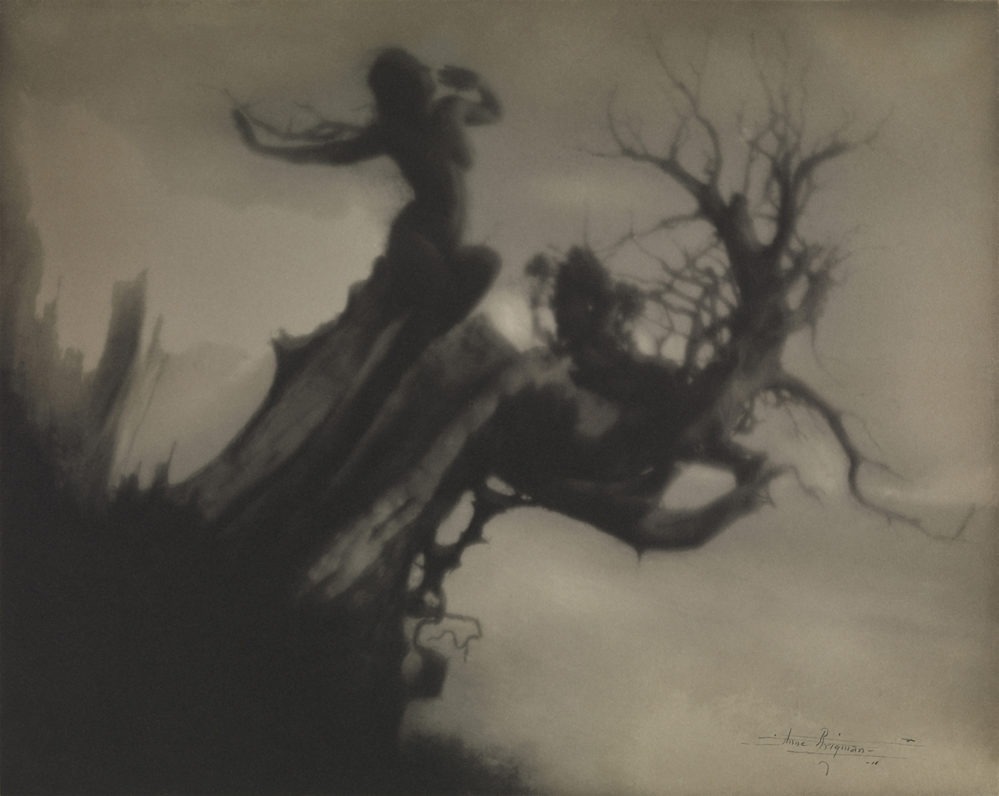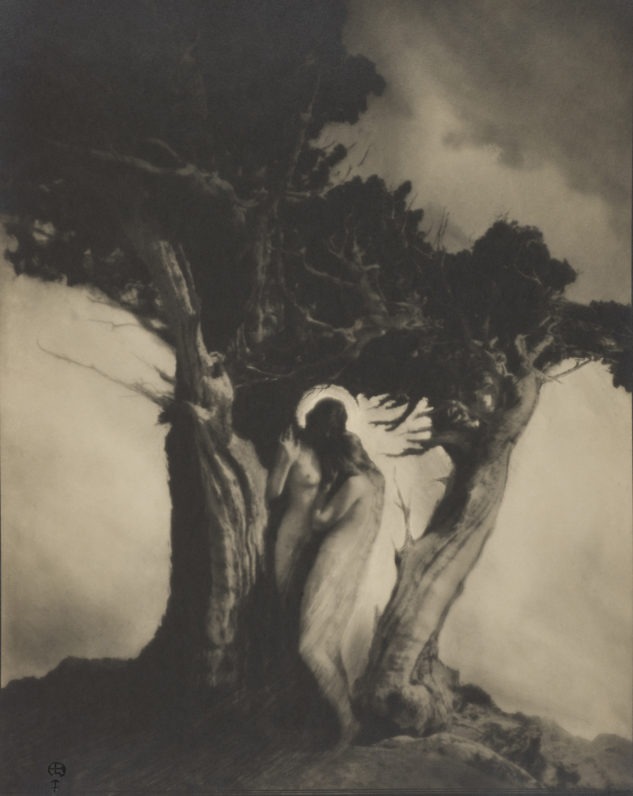 |
A Visionary in Modern Photography
Rizzoli Electa, 2020. 400 pp., 10x12½x1¾".
It feels both unsurprising and disappointing that I had not heard of Anne Brigman (1869-1950) until recently. She was never mentioned in my history of photography classes or textbooks. Thankfully, in 2018 The Nevada Museum of Art hosted a major retrospective of her work, providing some of the long-overdue acclaim she deserves. This book, A Visionary in Modern Photography, was published in conjunction with that exhibition. It is monolithic in stature — roughly 400 pages of beautifully reproduced images, poetry, and archival materials, such as personal letters and newspaper clippings.
Brigman’s work was primarily made within the tradition of pictorialist landscape photography. Many of her photographs are nudes, both of herself, her friends, and sisters, primarily in the Sierra Nevadas. These images feel familiar but unknown. They feel iconic, like something of a feverish and timeless dream.
Although “feminist art” didn’t exist until nearly seventy years after Brigman made her first photographs, she made nude photographs of herself — likely one of the first women to do so — at the turn of the twentieth century. This was perceived as an incredibly radical act, challenging the lingering Victorian norms of the day. Continually defying gendered social expectations, she found freedom by trekking deep into the mountains, with carriages, pack mules, and heavy photographic equipment in tow. An avid supporter of women’s rights, she married and divorced, never wanted or made children, and never required approval or permission from men. She publicly declared herself “emancipated from fear”. And she lived by these words, writing: “I slowly found my power with the camera among the junipers and the tamarack pines of the high, storm-swept altitudes.”
Rather than focus on expansive landscapes alone, her work reveals an intimacy with the landscape — an approach that male photographers of the time had not yet taken. By incorporating the body, her work rejects a false idea of “untouched uninhabited virgin wilderness”. There were people living there long before Brigman or her peers showed up.
 |
| Anne Brigman: A Visionary in Modern Photography. |
Brigman’s photographs glow and ache with a kind of spirituality and environmental eroticism (perhaps she would have identified with the term “ecosexual”). She actively wrote poetry, which complemented her photographs. She had a particularly intense connection with trees; apparent through reoccurring images of arched, nude female bodies, intertwining themselves within the branches and trunks of the knotted, ancient trees of the high mountains. Perhaps she felt an attraction to the ways that bodies and branches accentuate the natural expressions of one another. She wrote of her “hunger for the clean, high, silent places, up near the sun and the stars”, and desire to “eat and sleep with the earth”.
Her attraction and need for wild places was intense and beautiful, which is eloquently transmitted through her work. Anne Brigman shows us how she touched the landscape and the landscape touched her.
Purchase Book
Read More Book Reviews
 |
| Anne Brigman: A Visionary in Modern Photography. |
 |
| Anne Brigman: A Visionary in Modern Photography. |
 Madeline Cass is a native of Nebraska, and is currently based in Santa Fe, New Mexico. She earned a BFA in studio art with an emphasis in photography from the University of Nebraska–Lincoln in 2017. She primarily works within photography, poetry, and artist books. She is the author of how lonely, to be a marsh, published in 2019. Her work examines the multitude of relationships between art, science, nature, and humanity.
Madeline Cass is a native of Nebraska, and is currently based in Santa Fe, New Mexico. She earned a BFA in studio art with an emphasis in photography from the University of Nebraska–Lincoln in 2017. She primarily works within photography, poetry, and artist books. She is the author of how lonely, to be a marsh, published in 2019. Her work examines the multitude of relationships between art, science, nature, and humanity.









